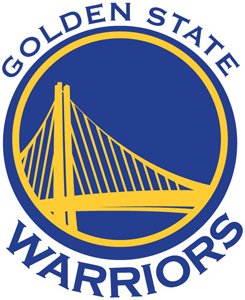The outbreak of Lin-sanity inevitably turns a
spotlight to the Warriors front office. That’s where the decision
to waive Jeremy Lin was made. Initially, the whispers from Warriors
brass were that Lin’s captivating run was more a fluke. Inevitably
Lin would come back to earth.
The outbreak of Lin-sanity inevitably turns a
spotlight to the Warriors front office. That’s where the decision
to waive Jeremy Lin was made.
Initially, the whispers from Warriors brass were
that Lin’s captivating run was more a fluke. Inevitably Lin would
come back to earth.
But as the Lin-credible run continues, the New
York Knicks having won ?seven in a row with the Bay Area native at
point guard, the reality is becoming more obvious. The Warriors
missed on this one.
Warriors general manager Larry Riley admitted as
much Wednesday.
“We can’t take the position he’s a fluke,
because he isn’t,” Riley said in a phone interview. “Jeremy Lin
will have a 10-year career in this league. People are expecting him
to fall off the face of the earth. That’s not going to happen.”
So the question begs: How did this happen?
Golden State wanted to make a play for restricted free agent center
DeAndre Jordan, a move that required clearing up more than
$10 million of salary cap space. That dictated that Lin’s salary of
some $700,000 be axed from the payroll.
The Los Angeles Clippers matched the Warriors’
offer, keeping Jordan in L.A, something the Warriors knew was a
risk.
“With a certain degree of reluctance, we did it
anyway,” Riley said. “At the same time, I’m not going to duck the
issue – we went after a center.”
The team could’ve used its amnesty clause on
center Andris Biedrins, who is making $9 million per over the next
three years. That would have allowed the Warriors to keep the likes
of Lin and swingman Reggie Williams, also let go in the bid for
Jordan.
“It’s truly hard to ask your owner to amnesty
$27 million when you have three years to figure out how to deal
with it,” Riley said.
The Warriors also could’ve renounced their
rights to rookie guard Charles Jenkins, an option several team
sources said coach Mark Jackson was against. But cutting Jenkins
would have made the Warriors’ offer to Jordan about $300,000
less.
“We had to get (the offer) up high enough to
make it viable,” Riley said.
Clearly, keeping Lin clearly was not a priority.
But Riley didn’t hesitate in pointing out the one person most
against getting rid of Lin.
“(Co-owner) Joe (Lacob) was the most reluctant,”
Riley said. “He really didn’t want to do it, more than any of us.
But we knew we had to. We needed a center, and we felt we had a
good chance to get one.”
Part of the Warriors’ problem, Riley said, was
not knowing what they had.
“I never saw Jeremy Lin as a starter on a
winning team in the NBA,” Riley said. “I did see him as a backup.
So he did exceed our expectations. He exceeded everyone’s
expectations, except probably his own.”
Even with starting point guard Stephen Curry’s
persistent ankle issues, Lin was limited to 9.8 minutes in 29
appearances as a rookie.
Under then-coach Keith Smart, veteran guard Acie
Law (currently playing in Greece) appeared in 40 games and averaged
15.8 minutes. Of the 17 players who donned a Warriors uniform last
season, 15 totaled more minutes than Lin, including forward Al
Thornton and swingman Rodney Carney.
“He should have played more, probably,” Riley
said. “But you understand where Keith was coming from. He was
trying to win games, trying to save his job.”
Riley said the Warriors guaranteed the first
year of Lin’s two-year contract because they saw his potential.
“We had a player. We let him go to go after
another player, and we didn’t get him. We have to face up to
that.”








